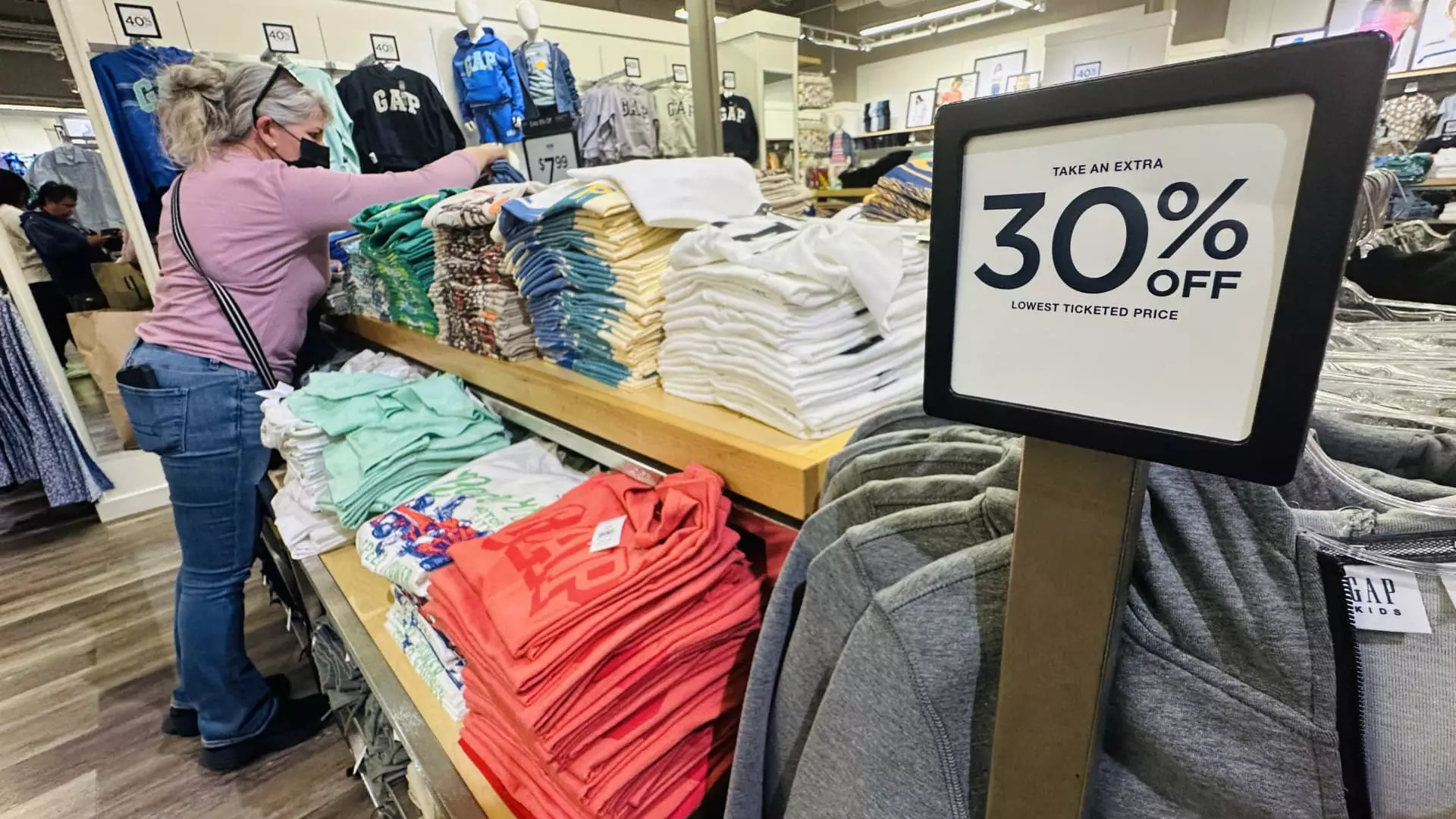In the complex web of modern commerce, few items symbolize the consequences of political maneuvering as vividly as clothing. With the introduction of heightened tariffs on imported goods, the apparel industry finds itself caught in a crossfire, where the ramifications go beyond mere numbers and become very personal for consumers. According to forecasts from the Yale University Budget Lab, the average cost of clothing in America could skyrocket by a staggering 64% in the short term, with the potential for a long-term increase of 27%. This isn’t just a hypothetical scenario; these figures translate into tangible hardships for families already grappling with economic uncertainties.
Tariffs, positioned as a tool for national economic resilience, have become an unsustainable burden that ultimately falls upon the shoulders of consumers. With the Trump Administration opting for a universal 10% tariff rate, and even imposing extreme tariffs as high as 145% on products from China, these measures are effectively becoming a tax on everyday life. The United States Fashion Industry Association has voiced alarm over these developments, emphasizing that no one wins in the trade war except those seeking to exploit the situation. The ramifications are particularly acute in a society where clothing is not merely functional but a significant aspect of individual identity.
The Strain on Middle-Class Americans
As the cost of apparel continues to climb, the middle and lower classes are bracing for considerable financial strain. The American Apparel & Footwear Association has highlighted how tariffs are particularly damaging to goods that cannot be produced domestically at scale. The U.S. imports a remarkable 97% of its clothing and footwear from other countries, predominantly from China and Vietnam. These statistics illuminate a national dependency that undermines the argument for protectionism. Higher tariffs lead to higher consumer prices, and countless Americans, many already feeling the pinch of inflation, will bear the brunt of this punitive taxation.
Research from Empower suggests that three-quarters of consumers are now engaging in “trade-down” behaviors, opting for less expensive alternatives as the cost of clothing escalates. This trend signals a painful shift in consumer behavior—if someone can’t afford a premium brand, they may settle for a lesser-known label or even a counterfeit. The implication here is that quality and authenticity give way to affordability, a phenomenon poised to proliferate as tariffs make genuine fashion more inaccessible.
The rise of so-called “dupes”—cheaper imitations of high-end fashion—marks a troubling embrace of a culture where quality is sacrificed at the altar of financial necessity. This not only leads to an increased presence of counterfeits in the market but also introduces ethical dilemmas regarding consumer choices. The allure of branded luxury is still strong, yet many are forced to navigate away from authenticity due to an artificially inflated market.
The Resale Revolution: A Silver Lining in a Cloudy Market
Amid the chaos of price surges, a counter-movement is gaining momentum: the resale market. As inflation reshapes consumer spending, more individuals are opting for secondhand goods, a trend supported by insights from Bid-on-Equipment and Smarty surveys. Nearly half of surveyed individuals expressed willingness to consider secondhand options or locally sourced alternatives due to tariff-induced price hikes. As prices rise, platforms that facilitate the buying and selling of preowned items are thriving, potentially accounting for up to 8% of the retail market by 2029, according to projections from OfferUp.
For many, this shift towards preowned items represents not just a cost-saving measure but also a conscious choice to favor sustainability over rampant consumerism. As younger generations embrace the concept of re-commerce, they demonstrate a willingness to explore alternatives to traditional retail, thus injecting renewed life into the secondhand market. This competitiveness serves as a dual advantage: it generates growth within the economy while also reducing waste.
Yet, even as this market expands, it faces its own challenges. The overwhelming demand for secondhand apparel cannot be met without a significant influx of products. According to industry experts like Julia Hughes, there simply aren’t enough quality used items to satisfy the consumer appetite. The paradox of a growing resale market set against insufficient supply adds another layer of complexity to the retail landscape, suggesting that while some markets may thrive, others remain woefully underprepared.
A Fleeting Solution amidst Ongoing Uncertainty
With back-to-school season around the corner and whispers of potential trade agreements fluttering in political spheres, the apparel industry remains in a state of exacerbated tension. The unpredictability of trade policies not only complicates production and supply chains but also leaves consumers grappling with uncertainty about future prices.
As the industry hurtles toward an uncertain future, the question remains: are tariffs truly the right approach to achieving economic resilience, or are they simply fostering a vicious cycle of inflation that exacerbates existing inequalities? This current trajectory may serve to enrich a select few while impoverishing the many, damaging the fabric of American society in the process. American consumers deserve more than this—an authentic choice that reflects their values, priorities, and economic realities.

